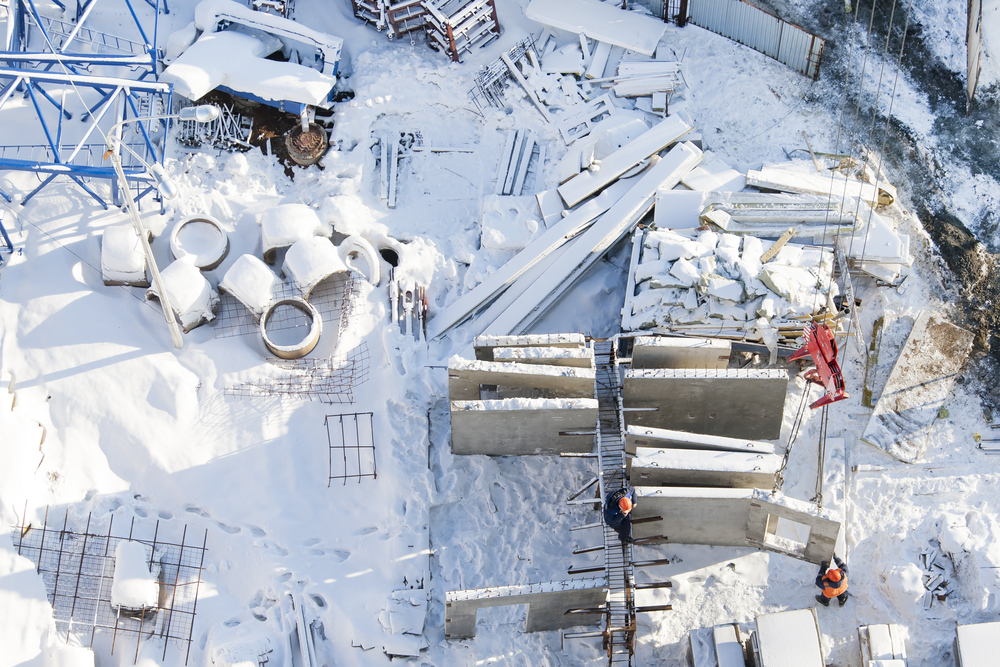Winter is here and there are still likely a few weeks of harsh conditions ahead. The construction industry faces several hazards which can lead to injuries and even fatalities during this season such as wind, snow and ice. Safety hazards are present year-round, however, the winter months bring their own challenges and can make an already challenging line of work even more hazardous.
Winter safety for the industry should be top of mind for all leaders as winter storms spread across the country. To protect workers, secure jobsites and minimize construction accidents and injuries, employers are encouraged to take a holistic approach to safety. At Skanska, we consider a worker Fit for Duty by intentionally reviewing the workplace environment and the physical, mental and emotional state of an employee, which enables them to perform essential tasks in a manner that does not threaten the safety or health of them, others, property and the community at large.
Preventing winter construction injuries begins with constant and practical workplace training. Safety leaders should proactively conduct regular training to teach workers how to identify the hazards associated with cold weather. Training can address how to recognize the symptoms of cold stress, prevent cold stress injuries and related illnesses, fall protection, and personal protection equipment (PPE). In addition, safety leaders should emphasize the importance of self-monitoring and monitoring co-workers for signs of fatigue, disorientation, excessive shivering, and bluish skin.
To minimize construction accidents, it is essential to educate workers and supervisors about cold-related injuries. By incorporating the following Fit for Duty markers into training, employers can keep safety top of mind during this time of year.
Workplace Environment – Leaders should conduct pre-checks to minimize winter hazards. Inspections should include the following:
- Monitor weather forecasts to prevent working in unfit conditions such as frigid temperatures or sleet. Included in training, employers should have a means of communicating with workers, especially in remote areas and know how the community warns the public about severe weather.
- Identify downed powerlines, fallen trees, ice, snow, and debris, and ensure the site is free of obstacles. Employers are encouraged to create a system for clearing jobsites such as putting down salt or sand to melt ice and provide better traction or enlisting the services of a third party to remove large pieces of ice or snow to prevent slips, trips, and falls in walkways. Another option is to install slip resistant material on walking paths, ramps and stairs. For areas that cannot be cleared, leaders should use signs to inform employees of environmental threats. Winter is also hard on machinery, which can make it unsafe to use in extreme conditions. When inspecting the jobsite, machinery should be checked and treated according to the manufacturer’s instructions.
- Provide heated break areas where workers can limit their exposure to extreme cold, snowy, and windy conditions. A trailer, tent or indoor area with portable temporary heaters can give workers a chance to rest, warm up, and change out of any wet clothing. Areas can also be used for acclimatization or to check for signs of frostbite.
- Insulate pipes or install heat trace to prevent utilities from freezing. Allowing a small amount of water to drip from the faucet can help from pipes freezing and bursting when temperatures get warmer.
Individual Environment – Supervisors are encouraged to communicate with workers’ regularly to gauge the physical, mental, and emotional state of the worker and cater to their needs. Elements to consider:
- Provide workers with PPE to avoid winter-related injuries. Workers should be provided and notified of necessary PPE from top to bottom. Discuss the importance of wool caps, anti-fog coated eyewear, properly textured and waterproof gloves, insulated mittens and hand warmers, thick socks, and insulated, yet breathable, boots with good traction.
- Conduct a pre-work check-in with employees to ensure they are focused and not impacted by factors such as less daylight, which can slow reaction times in the absence of the sun’s alerting effect. Supervisors can also use this time to acclimate new workers and those returning from vacation time.
Ensuring the workplace environment and the individual worker is Fit for Duty must begin with industry leaders prioritizing safety for all in all types of weather. Then, through proactive planning, effective communication and training, employers and employees can reduce potential weather related workplace injuries.
Reggie Asare is director of environmental health and safety at Skanska, one of the world’s leading project development and construction groups, where he oversees the EHS program for building operations for Texas.

